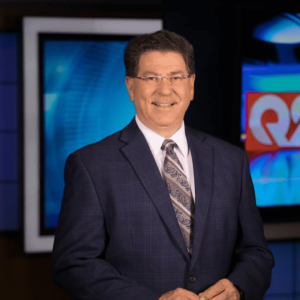The nation's hospitals, the front line in the battle against the coronavirus, are in line to get more than $50 billion in federal dollars from Congress' CARES ACT to help respond to the coronavirus pandemic.
But so far, those dollars have been slow to arrive in Montana and elsewhere, and now a new study reveals hospitals that primarily serve the poor got the smallest share of the money.
The study by the Kaiser Family Foundation included data from 4,542 hospitals nationwide.
The bottom line: Congress based the CARES Act financial help on a hospital's revenue rather than a hospital's need. The result is a sharp disparity between hospitals that serve a majority of private insurance patients, versus those with a high percentage of uninsured patients.
Boiled down to per-bed costs , hospitals with a high percentage of private payees received as much as $44,321 per bed. Hospitals doing more charity work and serving as teaching facilities received less than half of that, or $20,710 per bed.
In Montana's case, it's a slightly different scenario, but it also appears the CARES ACT dollars may have missed their mark.
"We had the lowest distribution in this latest run of any state in the country, and we also happen to have the lowest incidence of disease," said Rich Rasmussen, president & CEO of the Montana Hospital Association. "We took on a lot of expense, made major adjustments to operations to bring in the best approaches in public health, and we were successful in keeping the disease out of this state. But it didn't come without a cost, and unfortunately, the flow of dollars has really penalized highly efficient states like Montana."
As Montana hospitals prepared to deal with COVID-19 cases and canceled all elective surgeries, their costs went up, while much of their revenue dried up.
"You had all of this expense and no revenue coming in," said Rasmussen. "The flow of dollars from the CARES ACT really didn't appropriately adjust for states like Montana, which did everything by the book, and did very, very well."
In Billings, both St. Vincent Healthcare and Billings Clinic report similar shortfalls in their CARES ACT funding.
St. Vincent reports $33 million in total net revenue loss over the first five months of the year, while its share of CARES ACT dollars totaled $10.6 million.
As for the hospital's occupancy, those numbers took a major hit with the pandemic's arrival.
"Our census went from over 200 beds occupied, to less than 90 in just a matter of days," said Pam Palagi, vice president of financial services for SCL Health Montana region.
"At St. Vincent, we're seeing an increase of about 10 beds per day now that we've reopened most areas of the hospital," said Palagi. "In May, it was amazing how quickly our volume came back. In June, we are forecasting that we'll be in the black."
Billings Clinic reports similar numbers, estimating a net revenue loss this year as much as $42 million, while its share of CARES Act funds is $14 million.
"It doesn't balance it, but it helps," said Billings Clinic CEO Scott Ellner. "It helped to offset some of the losses due to the revenue challenges, but it didn't get us back to even. We're still going to see a negative operating loss for May."
Ellner said he's hopeful that in June the clinic will be close to its budget forecasts.
He credits the CARES Act dollars with helping Billings Clinic avoid the need for layoffs and furloughs, and he pointed out that the clinic's physicians, top executives, and high-level managers all agreed to absorb pay cuts as part of the hospital's austerity measures.
Looking forward, fingers are crossed because no one really knows for sure what's next. At the Montana Hospital Association, Rasmussen warns of tough days ahead.
"This is a marathon. It's not a sprint," said Rasmussen. "It would be very different if we had a vaccine in place, but we don't. And we know that we have the likelihood of COVID-19 surging in the fall, at the same time as the traditional flu. So we very well could have this convergence of infectious diseases hitting us at the same time."
Meanwhile in Washington, D.C., there is growing frustration among lawmakers over how long it's taken to disburse the CARES ACT dollars.
Politico magazine reports that as many as 1,900 health care centers across the country have been forced to temporarily close, waiting for their share of Cares Act dollars.




